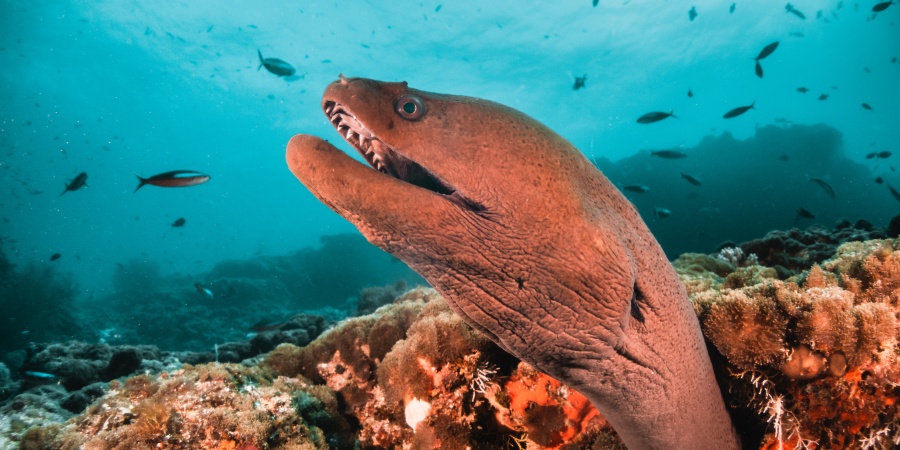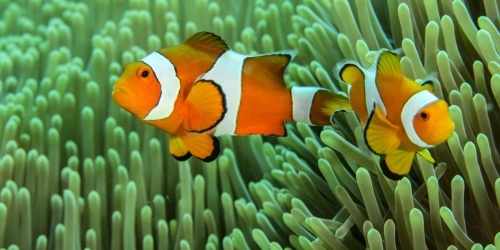
Morey Eel - photo Aaron / Adobe
What is a moray eel? Despite their snake-like appearance, moray eels are actually fish. All moray eels have one long fin that extends from the head to the tail. Because it looks quite ferocious, the moray eel has long had a fearsome reputation. Roman legend tells of Nero throwing slaves into watery pits filled with moray eels so bored aristocrats could view people being eaten alive. While it is a reputation that moray eels find hard to live down, they are not aggressive animals and will attack only when threatened. At least 15 different species live in north-western Australia.
What does it look like: A moray eel has a long, slender, snake-like body, combined with a large set of jaws. Most species have long, sharp canine teeth but some have low, nodular teeth. They are usually one to two metres long, though some species will reach up to three metres long and 30 centimetres in diameter. The colour varies from black to brownish-yellow with a pale underside.
Where do they live? These creatures live in holes in the reef. Moray eels are found in tropical and temperate waters throughout the world. They are very common in Rowley Shoals Marine Park and found in other marine parks in northern WA.
What they eat and how: They rarely venture far from the crevices in which they live and feed by concealing themselves in the reef and waiting for an unwary meal to swim by. The morays with long, canine teeth feed mainly on fish, and occasionally on octopuses and crustaceans. Other species with blunt, crushing teeth prey principally on crustaceans, especially crabs. Moray eels are able to tie their bodies into knots, to anchor themselves when tearing at food.
Behaviour: Individuals nearly always have their mouth open, and appear ready to bite. In fact, the mouth is open to allow water to pass through the gills, enabling them to breathe.
Breeding: Courting moray eels open their mouths very wide, then wrap their bodies around each other for hours. They do not separate until the female has laid her eggs and the male has fertilised them. Once hatched, all eels go through a larval phase (known as a leptocephalus) as juveniles, in which they form part of the plankton.
How you can protect moray eels: To avoid accidentally bumping in to an eel they have not seen, divers should always maintain proper buoyancy so they are swimming just above the reef, a habit which will safeguard the diver from an attack from an eel and also protects delicate corals. Spearing these animals is a sure way to have a very annoyed moray eel attached to your leg. Feeding eels is strongly discouraged, as it has the potential to make eels seeking food aggressive towards divers.



























